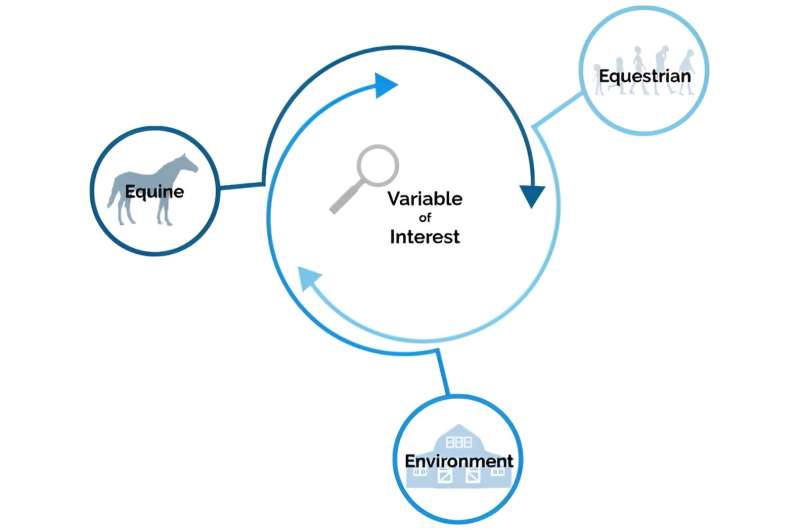This article has been reviewed according to Science X's editorial process and policies. Editors have highlighted the following attributes while ensuring the content's credibility:
fact-checked
peer-reviewed publication
trusted source
proofread
Researchers develop new model to advance equestrian research

The University of Kentucky Sports Medicine Research Institute (SMRI) has developed a new approach to the research, health and safety of equestrian sports.
In a paper published in Animals, Michaela Keener, M.S., and Kimberly Tumlin, Ph.D., discuss their new approach called the Triple-E Model. It expands on the One Health model that dates back to ancient Greece.
The One Health model is a concept that recognizes the interconnection between humans, animals and the environment. The new Triple-E Model focuses specifically on the horse (equine), the rider (equestrian) and the environment.
Keener and Tumlin found that the existing models in equestrian sports didn't necessarily support a collaborative approach. Previous models make it challenging for researchers, horse owners, trainers, riders, veterinarians, and the equestrian community as a whole to work together from different areas of expertise and in various settings.
The purpose of their Triple-E model is to capture the complexities of how the horse, rider and environment interact. The new model emphasizes the importance of these three components to create a holistic and adaptable model for the equestrian community that can be adjusted and tailored to various situations and needs. A critical component of this approach includes a community feedback loop to ensure potential solutions are translatable to practice.
Keener is a doctoral candidate in the Rehabilitation and Health Sciences doctoral program at the University of Kentucky College of Health Sciences. She is also the research administrative coordinator for the Equestrian Athlete Initiative at the SMRI. This week she will be working at the Breeders' Cup at Santa Anita Park in Arcadia, California, for Jockey Cam's Virtual 360 Experience.
Tumlin works as a research assistant professor for the Center for Innovation in Population Health in the University of Kentucky College of Public Health and in the Department of Athletic Training and Clinical Nutrition in the College of Health Sciences. As part of these roles, she is the research director for the Equestrian Athlete Initiative at SMRI.
Learn more about their work at UK, including their research into jockey performance and their efforts to develop a jockey-specific concussion test, known as "the Graham test."
More information: Michaela M. Keener et al, The Triple-E Model: Advancing Equestrian Research with Perspectives from One Health, Animals (2023). DOI: 10.3390/ani13162642
Journal information: Animals
Provided by University of Kentucky





















